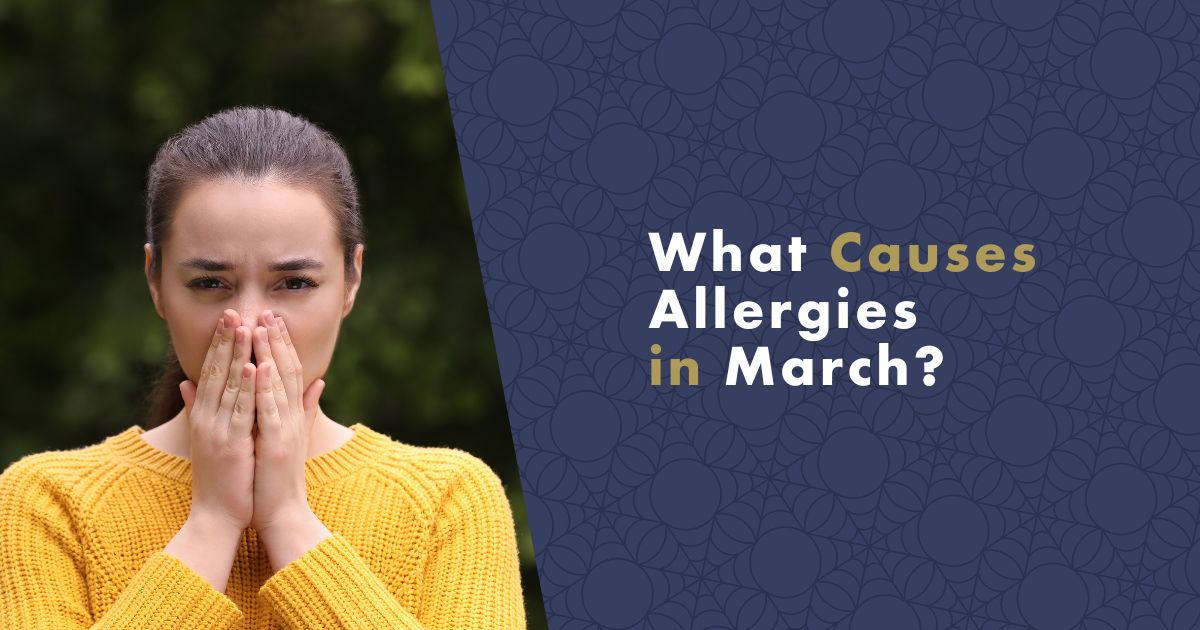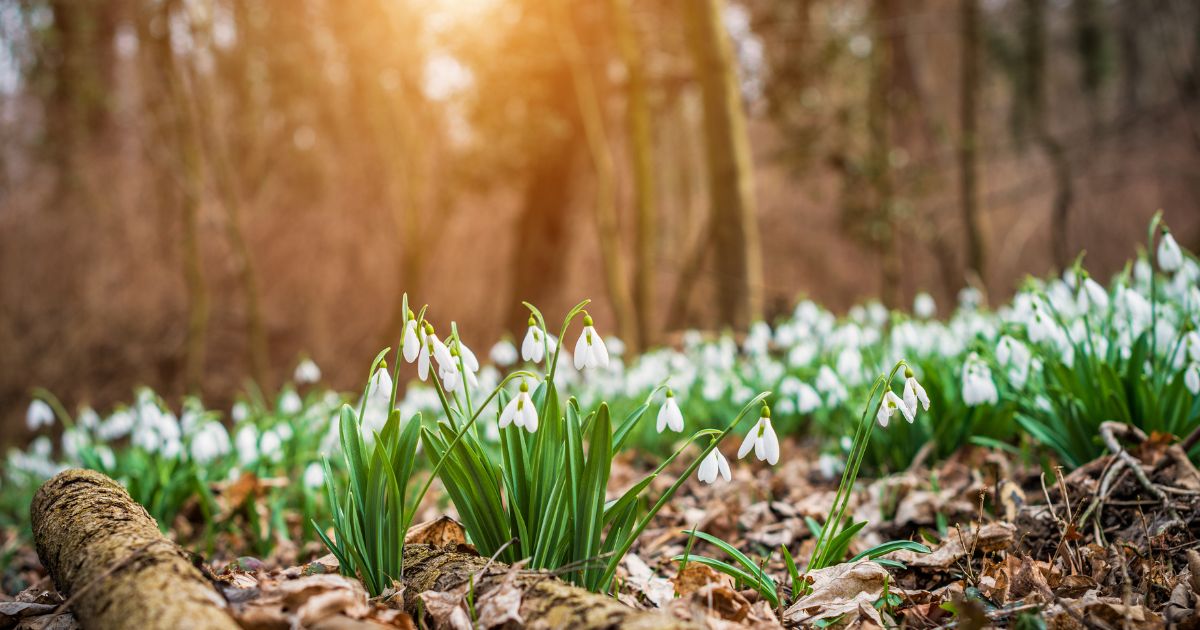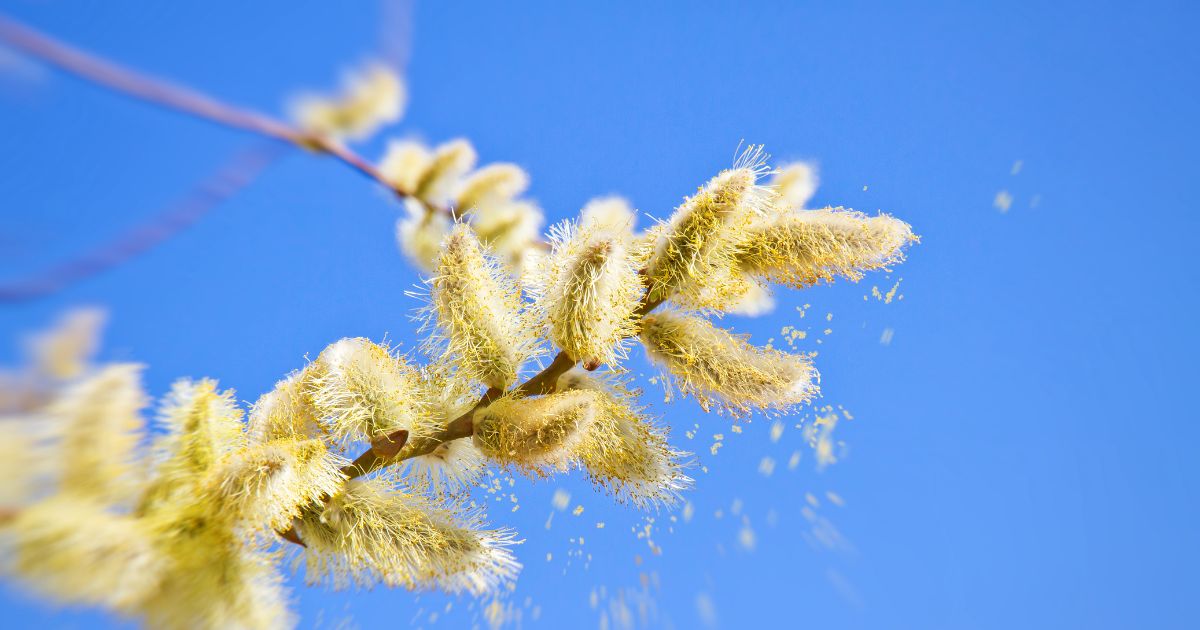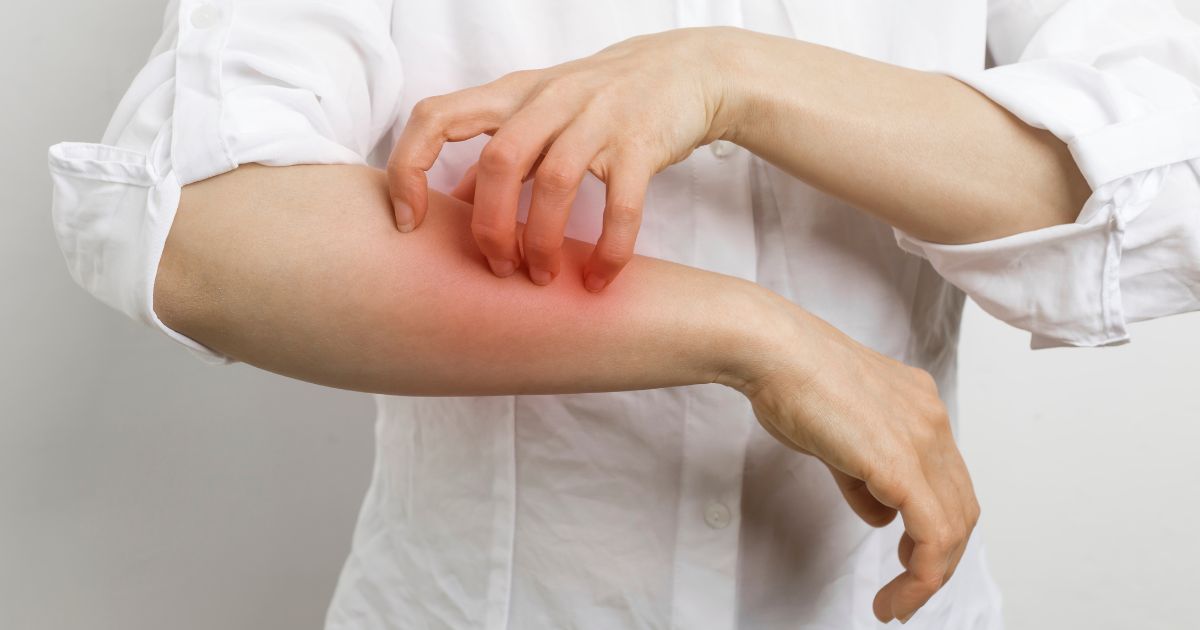With March comes the arrival of spring, trees begin to bloom, the first spring flowers and weeds appear, bringing allergy symptoms to allergy sufferers after winter. Allergies in March mainly cause discomfort to all pollen and mold allergy sufferers. What other allergens may be present in March and how to protect yourself from allergies? You will find out everything in this article.

Most Common Allergy Symptoms in March
Allergy manifests differently in each person. Allergies in March are mainly caused by dust mites, pollen, and molds. Among the most common allergy symptoms in March, which are experienced by almost all allergy sufferers, include itching eyes, runny nose, nasal congestion, sneezing, swelling, or shortness of breath. It's not pleasant when spring allergies strike, but don't worry, there are things you can do about it.
TIP: Do you know how to recognize if you have an allergy?
When Does Pollen Allergy Begin
Pollen allergy is one of the most common allergies overall and is often referred to as so-called hay fever. Allergic reactions are triggered by the immune system even at very low concentrations of pollen in the air, as low as 5 pollen grains per cubic meter. When the pollen season is at its peak, there are 100 to 500 pollen grains per cubic meter of air.

You may be interested in: How to deal with pollen allergy in spring
How Long Does Spring Allergy Last
In spring, not only trees start to bloom, but many other herbs and flowers as well. However, flowering doesn't end in late spring, but usually continues from March to September. The highest concentration of pollen in the air is usually in the summer months.
TIP: How to protect yourself from allergies in July and August, when pollen concentration is highest?
How Pollen Allergy Manifests
When your body encounters a specific type of allergen, the immune system reacts to it and defends itself with typical allergic symptoms, which resemble respiratory diseases or skin reactions.
Pollen allergy manifests in two phases.
- First phase - sensitization (increased sensitivity): The body produces antibodies against the allergen, which then enter the immune system.
- Second phase - allergic reaction: When you come into contact with the allergen again, the antibodies produced by the immune system are released and cause allergic symptoms.
Even though it's still cold and spring is just beginning, pollen allergy can manifest itself in addition to the above symptoms with increased fatigue and irritability.

Most Common Allergens in March
In March, spring arrives, which everyone looks forward to after a long winter. Especially in this spring period, trees and other plants begin to bloom, so among the most common allergens in March are mainly tree pollens, grasses, but also molds and dust mites.
Tree and Herb Pollens
Did you know that some trees can start blooming as early as February and March? It depends, of course, on the current weather, but when it's warm, spring allergies can arrive early.
Trees Blooming in March
Tree pollens are quickly carried by the wind and it can be difficult to defend against them. Not everyone with pollen allergy necessarily has an allergy to all pollens. Which trees and shrubs bloom already in March?
- Birch: At the end of March and the beginning of April, birch pollen grains begin to ripen, but they can cause problems as early as the beginning of March, when their catkins appear. It usually depends on the number of warm days and the weather. If you have confirmed birch pollen allergy, you will likely also have an allergy to beech, oak, hazel, or alder pollen.
- Hazel: Hazel starts to bloom even before the leaves emerge, so pollen can bother allergy sufferers from January to May. Hazel pollen is considered a moderate to strong allergen.
- Alder: Alder blooms very early, already when temperatures are around 5 degrees Celsius. However, the flowering is most intense during February and March.
- Italian Cypress: Among conifers, Italian cypress blooms in March and continues to bloom until May. This pollen can often be easily seen as the wind carries it from the trees.
- Oak: Oaks typically bloom from April onwards, but in warm conditions, they may also bloom in March. Oak pollen is considered a strong allergen.
- Juniper: From February to April, juniper also blooms. Some species bloom even in winter months.
- Elm: Elm also blooms from February to April. It depends on the species, weather, and region.
- Poplar: Poplar pollen is known as strong allergens, especially for some individuals. Poplars bloom between March and April.
- Willow: Willows bloom from February to April, but their blooming is most intense in March.
#produkty#https://www.nanospace.store/drops-and-sprays/
Flowers and Weeds Blooming in March
Not only trees begin to bloom in March, but also a whole range of other flowers, grasses, and weeds bloom, and their pollen is often more irritating. Among the March herbs, you can find common chickweed, alternate-leaved golden saxifrage, ground-ivy, shepherd's purse, and among the grasses field wood-rush. Among the flowers blooming are snowdrops, primroses, white butterbur, or coltsfoot.
Mites Rampage in Spring Too
Let's not forget, mites are with us all the time, so having an allergy to mites in March is nothing unusual. And because March still falls within the heating season, it is often even worse than, for example, in summer. However, you can deal with mites all year round with nanofiber bedding for mite protection, which mites cannot survive on and cannot penetrate. Every allergy sufferer should have mite-proof pillow, duvet, and mattress cover.

Tip: How to choose bedding for allergy sufferers?
Molds in March
In March, the situation for people with mold allergies can significantly worsen. Although it is generally known that molds are present throughout the year, the humid and warmer conditions of spring can create an ideal environment for their growth and spread. Moisture from melting snow and rain combined with temperature fluctuations can cause molds to grow more actively in places such as agricultural soil, fields, foliage, decaying wood, and damp walls of houses.
Tip: Mold allergies and everything you need to know.
How to Protect Yourself from Allergy in March
To minimize the allergic symptoms that come with spring, we have several tips for you on how to protect yourself from allergy.
- Avoid allergens: The simplest solution but the hardest to implement is avoiding allergens. Walks in nature, meadows, or parks also bring the risk of allergic reactions.
- Monitor pollen forecasts: With pollen forecasts, you will learn when pollen concentrations in the air are highest. At that time, it is ideal to use a mask, scarf or avoid outdoor activities.
- Keep a clean home free of allergens: Keeping a clean home where allergens won't bother you is the basis for every allergy sufferer. Ventilating frequently, washing bedding, and using a quality air purifier or dehumidifier to prevent mold formation at home will help you.
#produkty#https://www.nanospace.store/anti-dust-mite-bedding/?order=bestseller
Tip: Pollen calendar for allergy sufferers
Learn More About Allergies:
Frequently Asked Questions (FAQ)
How to recognize spring allergy?
Spring brings a lot of blooming trees and plants, which also bring pollen, which spreads most in the air. Allergy sufferers usually know that spring is here because allergic reactions are triggered by the immune system even at very low pollen concentrations in the air, about 5 pollen grains per cubic meter. When the pollen season is at its peak, there are 100 to 500 pollen grains per cubic meter.
When does birch allergy start?
Already at the beginning of March, catkins appear on birches, which bloom from late March to early April. It depends on the weather and the number of warm days, but birch allergy can start in March and last until May.
How to get rid of birch allergy?
If you want to treat birch allergy, immunotherapy may help, which should be consulted with an allergist. To reduce symptoms, it is best to keep your environment free of allergens, ideally with an air purifier for allergy sufferers, wear masks and respirators, and avoid places with high pollen concentrations.
How long does spring allergy last?
With the arrival of spring comes the pollen season, which does not end at the end of spring. Spring allergies can last for about 10 months, from March to September, because different trees and plants bloom in each month.
What blooms in spring and causes allergies?
In spring, most trees bloom, which are common allergens for pollen allergies. Not only from March, but already from February, you can find blooming: birch, hazel, alder, poplar, or oak.
Sources
- Röder, E., Berger, U., & Wüthrich, B. (2003). Long-term pollen exposure and allergen sensitisation. Journal of allergy and clinical immunology, 111(1), 145-151.
- BOHLE, B. The impact of pollen‐related food allergens on pollen allergy. Allergy, 2007, 62.1: 3-10.
- Agenäs, H., Brorsson, A.L., Kull, I. et al. Treatment with pollen allergen immunotherapy improves health-related quality of life in children and adolescents: a three-year follow-up-study. Allergy Asthma Clin Immunol 19, 4 (2023).
- Matricardi, P. M., Kleine-Tebbe, J., Hoffmann, H. J., Valenta, R., Hilger, C., Hofmaier, S., ... & Traidl-Hoffmann, C. (2016). EAACI Molecular Allergology User's Guide. Pediatric Allergy and Immunology, 27(S23), 1-250.

